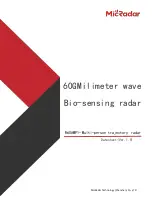
Draft 02 - Sep 1 2015
6-18
Viking Mobile Radio Operating Manual
SMARTNET / SmartZone / P25 Trunked Features
• Scanning is turned ON and OFF by the Scan option switch, soft button (Lightning
Control Head only), or selecting the menu parameter. Talkgroups (channels) can be
programmed so that scanning automatically starts whenever the talkgroup is selected
(Autoscan).
• When responding to calls in the scan mode, the programming of the Talkback Scan
parameter determines if a response always occurs on the talkgroup of the call (Active
Group) or the Selected Group if they are different. Transmissions at other times always
occur on the selected talkgroup.
• Up to 255 scan lists or the number that fit in available memory can be programmed.
Each list can include the number channels/talkgroups (enabled for your radio) from the
same system, one of which can be a priority group as described in the next section.
• If the Scan List Edit option key is programmed (or if the menu parameter is selected),
scan lists are user programmable (see Section 6.11.2). In addition, nuisance channels
can be temporarily deleted as described in Section 4.12.5.
• Each talkgroup is programmed to select one of the programmed scan lists or “No List”
(scanning is disabled). If scanning is enabled and the selected channel does not permit
scanning, it is automatically enabled again when a channel is selected that permits
scanning.
• The selected scan list can be temporarily changed if the Scan (List) Select option switch
is programmed. The procedure is described in Section 6.11.2.
• In addition to calls on channels in the scan list, pages, private/unit calls, and telephone
calls are received while scanning. Private and telephone calls are not interrupted by
priority messages.
• P25 Trunking allows two Priority talkgroups per list.
Every radio on the system has to register with the Zone or Site Controller so that the
system knows where everyone is and if traffic from one site needs to be sent to another
site. This is determined by the list of Talkgroups registered with the radio.
When a call needs to be passed to a radio at another site, the traffic from one site to another
is then sent out over the control channel to the radios. When a radio is scanning, it is
monitoring the call information being sent out over control channel. The radio compares
the call information (Talkgroup and voice channel handling the Talkgroup) to the scan list
to see if any of the Talkgroups it is scanning are receiving a call. If it finds a match, the
radio moves to the voice channel for this call. If no one is registered on that Talkgroup on
the Site being scanned, the call information for the call is not sent out by the control
channel because the Zone or Site Controller did not see a requirement to pass this
information for this call and the call will not be received.
For example: Radio 1 is on a call on talkgroup 1 on Site 1. Radio 2 is on talkgroup 2 on
Site 2 and scanning. The call on talkgroup 1 from radio 1 is not heard by radio 2. Then, if
radio 3 registers on talkgroup 1 on site 2, the call from radio 1 on Site 1 will go to Site 2.
Radio 2, radio 3, and any other radios on site 2 and scanning, will hear the call.
















































